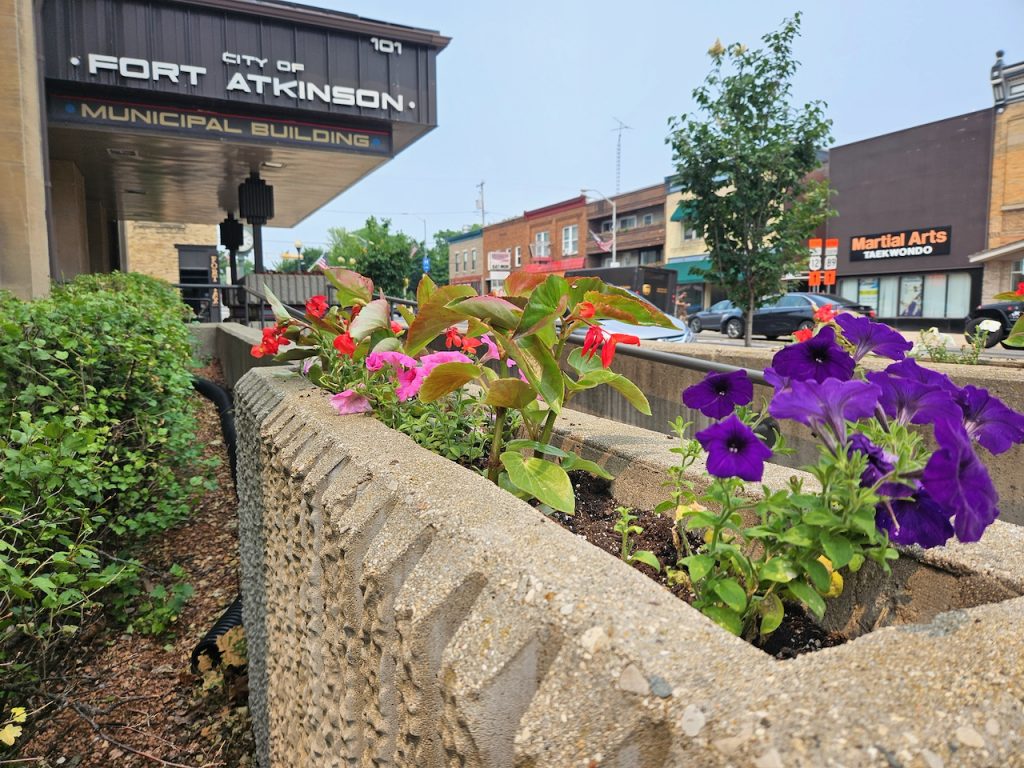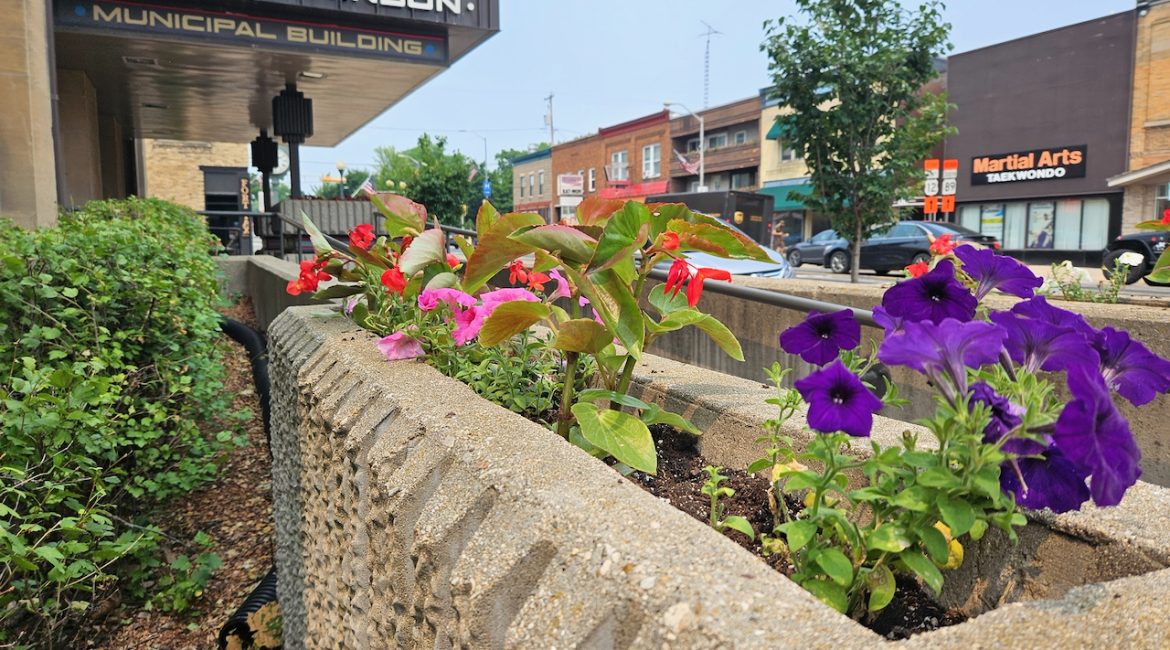By Ryan Whisner
The Fort Atkinson City Council has advanced an ordinance intended to permit the operation of ATVs and UTVs on city streets.
On Tuesday, council members approved the first reading of the ordinance by a vote of 4 to 1. Council member Davin Lescohier cast the opposing vote, basing his decision primarily, he said, on city staff’s ongoing opposition for safety reasons.
A second reading of the ordinance is set for the council’s Tuesday, Oct. 17 meeting, following by a third reading which is anticipated to take place in November.
Discussion on the proposed ordinance began at the July 6 Ordinance Committee meeting during which city officials received public input from representatives of area ATV clubs.
Although no formal vote was taken at that time, Council President Bruce Johnson and council member Kyle Jaeckel supported directing city staff to draft an ordinance for future review.
In recent years and months, Jefferson County, several towns, and other cities and villages in the region have approved ordinances, allowing ATV and UTV riders to use public roadways, with added restrictions to the existing state statutes that govern the use of such vehicles.
Historically, Fort Atkinson city staff has maintained opposition to moving forward with such an ordinance, citing enforcement and safety concerns.
“Staff does not support changing the city’s ordinance to allow ATV use in the city due to the safety and enforcement concerns as well as the lack of consistent regulatory direction from the state of Wisconsin,” said Fort Atkinson City Manager Rebecca Houseman noted previously. “Staff recommends that the city council delay any decisions relating to ATV use within the city until the state provides additional direction relating to the applicability of state motor vehicle laws to ATVs.”
Following the July discussions, the city scheduled two discussion workshops during which further discussion was held on the matter. Ultimately, discussions led to the first reading of the draft ordinance at the council meeting on Tuesday.
Provisions in the proposed ordinance authorize the use of ATVs and UTVs on city streets, and includes language which requires operators to follow multiple motor vehicle-related statutes.
Provisions in the ordinance include:
• All operators must be 18 years or older, hold a valid driver’s license, and be able to provide proof of insurance and registration by request of law enforcement officers.
• All operators must use protective eyewear.
• ATVs and UTVs may not be operated on city streets between the hours of 10 p.m. and 5 a.m.
• Headlights will be always present and on.
• Operators must obey all traffic rules and regulations.
• Penalties for violations will range from $50 to $200.
Local ATV/UTV clubs have volunteered to donate funding for signage. Funds from the clubs will be used to acquire and install the appropriate signs.
During Tuesday’s meeting, council members approved an amendment to the section of the draft ordinance related to the use of eye protection to include a provision allowing for ATVs or UTVs to have windshields of sufficient height to meet the eye protection requirement as with motorcycles in existing state statutes.
Although multiple meetings on the issue had been held, Tuesday’s council meeting had been the first opportunity for council members to vote on any of the provisions within the ordinance.
Lescohier expressed interest in again discussing the hours of operation. As presented at the meeting, the limits were to have no operation between 10 p.m. and 5 a.m. When discussed at the workshops, city staff had suggested dusk to 9 a.m.
“I don’t know that we’ve had unanimity in what the appropriate hours are,” he said, making a motion to amend the hours to 9 p.m. to 8 a.m. For discussion purposes, another council member seconded the motion.
Johnson cited the city of Jefferson, which recently altered its hour limitations to 10 p.m. to 5 a.m.
“They are our next-door city, and they have not experienced problems, and… it did not affect the safety of their citizens,” he said.
Council member Mason Becker also questioned the validity of setting hours that differ from surrounding communities.
Lescohier said he was trying to find some common ground where there might be some give and take as the safety aspects are considered.
He noted that an original suggestion, restricting operation from dusk to 9 a.m. was crafted to ensure that most of the operation time would be during daylight hours, which, he said, is considered to be safer that operation in the absence of daylight.
“Of all of the people who have contacted me or who I have asked for their opinion on how they feel about this, safety is their primary concern,” Lescohier said. “That’s where I’m coming from. It’s largely safety related.”
Citing some of the recent statistics on ATV/UTV crashes, he expressed concern about how many occur on public roadways or routes.
Reports compiled by the Wisconsin Department of Natural Resources (DNR) note that within the first nine months of 2023, 26 people died in ATV/UTV crashes in Wisconsin. Statistically, the DNR reports, more than 90% of ATV/UTV crashes involve a lack of helmets or seatbelts.
Department of Transportation-approved helmets are mandatory for all riders and passengers of ATVs or UTVs under the age of 18 unless traveling for hunting or fishing. The DNR recommends that operators wear helmets at all times while operating their vehicles.
Also, under state law, UTV operators and passengers must wear seatbelts. In addition, passengers are not to ride in any part of the vehicle not designed for use by passengers, such as the storage box area, sitting on someone’s lap, or the roof of the vehicle.
More than 50% of the fatalities in 2023 (14) occurred on public highways, roads, or routes as designated by the state or local municipality. Per the DNR, an ATV/UTV route is a highway or sidewalk designated for use by ATV operators by the governmental agency having jurisdiction and differs from a public trail.
In addition, of the public highway or route incidents, 12 of those are either pending investigation or designated as having been alcohol-related.
Based on DNR records, the total number of fatalities in 2023 reflects the general trend of nearly 30 ATV/UTV fatalities a year that have occurred over the past decade. While the number of overall crashes has decreased over that period, the number of fatalities has declined slightly, while remaining generally in the low to mid-20s.
Further, in 2020 and 2021 deaths were reported at 37 and 47 respectively.
Combined, there have been approximately 299 fatalities involving ATV/UTV use since 2013. More than 2% were reported to have occurred on public highways, roads, or routes, and more than 1% of those were alcohol-related.
As with other motor vehicles, it is illegal to operate ATVs or UTVs while under the influence. However, open intoxicants are permitted.
Past DNR reports on ATV and UTV use show that alcohol, excessive speed, sharp turns, and reckless operation are the top contributing factors to crashes.
“If we are going to proceed with an ordinance, I would like to be as cautious as possible, and maybe somewhere down the road my caution will prove to be overblown on my part,” Lescohier said Tuesday. “I’ve been weighing that against the positions of our city staff and our police chief who have clearly articulated the safety and enforcement objections,” he said. “All along at the same time, I continue to find public sentiment is overwhelmingly opposed to this ordinance.”
Johnson was in favor of keeping the hours as presented.
“I don’t want to see the confusion to surrounding people, who will be out ATVing and suddenly find confusion in our city at an hour that we don’t allow,” the council president said. “Being uniform with the other areas I think is important for all parties concerned and not having safety issues.”
In addition, he disagreed with any assertion that the ATV/UTVs would be easier to see in daylight with the requirement of headlights being on.
“I think that that’s not true,” he said. “You’ll see them easier at night with lights than you will even in the daytime.”
Meanwhile, Jaeckel admitted he would be apt to follow Lescohier’s concerns were it not for city streets generally having streetlights, unlike county or town roads.
Lescohier pointed out that while some surrounding communities have similar hours in place, not all are identical.
“I keep going back to, there has to be a reason why the state has been unable or perhaps unwilling to enact uniform legislation on this topic,” he said. “That’s how we wind up with a patchwork quilt of local ordinances that are in sporadic pockets across the map. Individual municipalities are left to their own devices to decide what is or isn’t appropriate.”
He again cited the city staff’s position and those whom he has spoken to about the issue being opposed to the ordinance.
“My experience with the public has been quite the reverse of what your experience has been,” Johnson noted.
Lescohier’s proposed amendment to the hours failed to pass as he was the only one in favor of it.
Following the defeat of his amendment, he noted an additional concern regarding the implementation timeframe.
Should the ordinance be approved following its third reading in November, Lescohier questioned if signage would then quickly be acquired and installed or if would it be delayed until spring.
Houseman suggested nothing would likely be purchased until the ordinance was passed, pushing full implementation into 2024.
Rather than continuing to debate the issue, Becker suggested an effective date should be reviewed and added by city staff for the next reading and moved to advance the draft through its first reading.

Fort Atkinson Municipal Building, file photo/Chris Spangler.
This post has already been read 3120 times!
